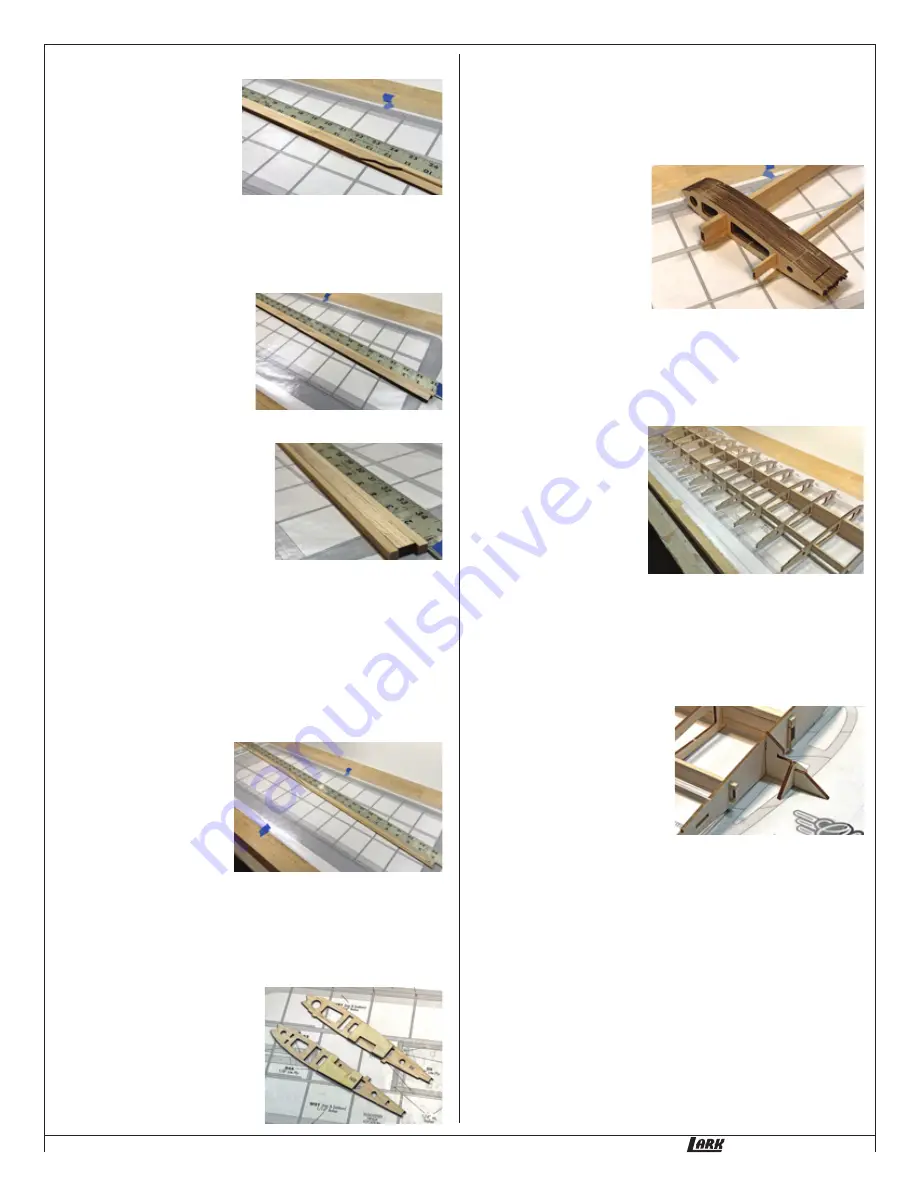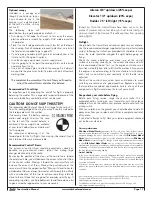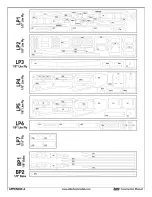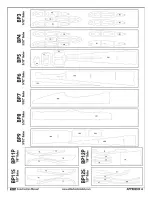
Page 4
www.oldschoolmodels.com
Construction Manual
n n
Step 3 - Wing Assembly (front spar)
Locate another SP2 from BP1
and this is now glued on top of
the SP1 you just installed. This
will allow the lower and upper
scarf joints to overlap, rather
than be aligned. Again, make
sure that this SP2 is glued to
the SP1 (and the overlapping portion of SP2) below it, as well as
where it contacts the basswood strip. Make sure this joint is straight
as shown here.
n n
Step 4 - Wing Assembly (front spar)
Now locate another SP1 and glue
in place, aligning the laser-cut scarf
joints and making sure it is properly
positioned as the glue cures.
n n
Step 5 - Wing Assembly (front spar)
To complete this spar, locate another
of the 1/4” square basswood strips.
Glue this to the edge of the spar
assembly, to the edges of the SP1
and SP2 pieces as shown here. Make
sure it’s flat and straight along it’s
entire length.
n n
Step 6 - Wing Assembly (front spar)
Once the glue has cured in the spar assembly, remove it from the
building board and lightly sand it’s surfaces to make sure they are
flat and smooth, removing any glue bumps that may have formed
during the assembly and curing. Don’t go overboard - just make
sure that you have a piece that is flat on all sides so it will slide
smoothly into the ribs during the upcoming steps.
n n
Step 7 - Wing Assembly (rear spar)
Now locate two of the 1/8”
square basswood strips, one
SP3 and one SP4 from BP1.
Using these pieces you’ll
make the rear spar, using the
same techniques as you did
for the front spar. Start by
gluing the long edge of SP3
to the basswood strip, making sure it’s straight along it’s length.
Then glue SP4 in place, lining up the scarf joint. Follow it all up with
the other length of basswood glued to the exposed edges of SP3
and SP4. Lightly sand it flat in preparation for the upcoming steps.
n n
Step 8 - Wing Assembly (R2/R2A, R4/R4A)
Now locate one R2 from BP1, one
R4 from BP3, one R2A from LP3
or LP5 and one R4A from LP3 or
LP4. Pay careful attention to the
orientation when doing this as
you'll be gluing R2A to the outside
face of R2 (towards the wing tip)
and R4A to the inside face of R4
(towards the wing root). When glued in place, R2A and R4A need to
be perfectly aligned with top and bottom edges of their respective
ribs. Also the rear edge should be just on the edges of R2A and
R4A should be aligned with the rear spar cutouts in each rib.
n n
Step 9 - Wing Assembly (wing ribs)
Now locate one complete
set of wing ribs. Stack them
up in order by referring to
the plans. Starting at the
root: R1, R2, R2/R2A, R3,
R4/R4A, R5, R6, R6, R5, R5,
R5, R5 and R7. Make sure
you align them correctly with
the under-side tabs all in the
same direction. Double, triple, and quadruple check that you have
them in the correct order, then when satisfied, push the front spar
into the larger rectangular hole in each rib. The rear spar is pushed
through the smaller rectangular hole towards the rear of the ribs.
n n
Step 10 - Wing Assembly (wing ribs)
Now place this “assembly”
onto the wing plan on your
building board and start
to carefully space the ribs
apart so they align with the
plans. Take your time and
use a light touch so you
don’t break off any of the
underside tabs, or crack any
of the ribs. They don’t need to be perfectly aligned yet, but get
them close. Double check that all the ribs are in the right order one
more time as in the next step everything is locked in place, making
this the last time you’ll be able to easily fix any mix-ups.
It’s worth
one more look now - trust me.
n n
Step 11 - Wing Assembly (wing ribs)
Starting at the tip rib (R7), it’s
time to start gluing things in
place. I like to put a small drop
of medium CA on the bottom of
the underside tabs of this rib to
help lock it in place to the waxed
paper (or you can use pins if
that’s your thing). Also make sure
to use the enclosed triangle that you should have at hand from the
first steps of this build. This ensures that this rib is perfectly aligned
at 90° to the building surface.
Also make sure that the front and rear spar protrude a little from
R7 - maybe an 1/8” or so.
When satisfied, glue the two spars to R7.
n n
Step 12 - Wing Assembly (wing ribs)
Now, slowly and methodically work your way towards the root rib,
one rib at a time. Make sure each rib is precisely aligned - the
spars are aligned, and that you firmly glue each rib to both spars.
As you go along, you also might want to place a drop of glue on
the underside tabs on every third or fourth rib to keep everything
aligned with the plans. Continue with this until you have glued the
R2/R2A rib in place. Stop there and move on to the next step.





































